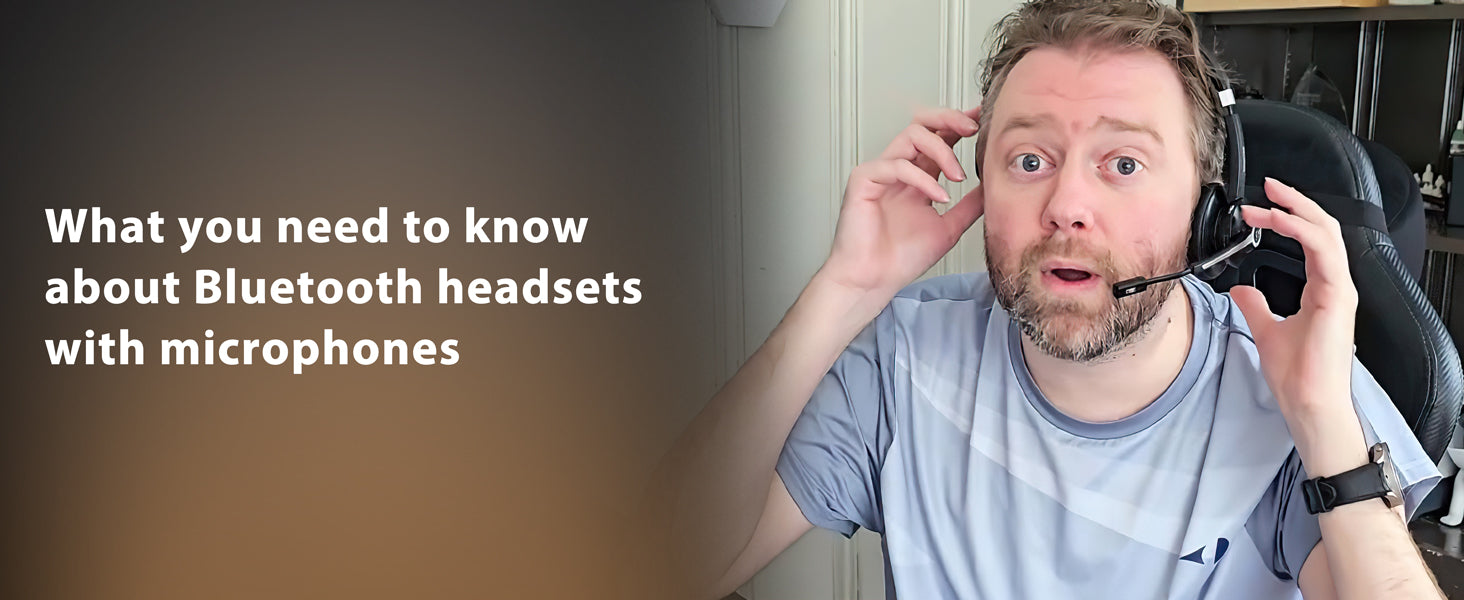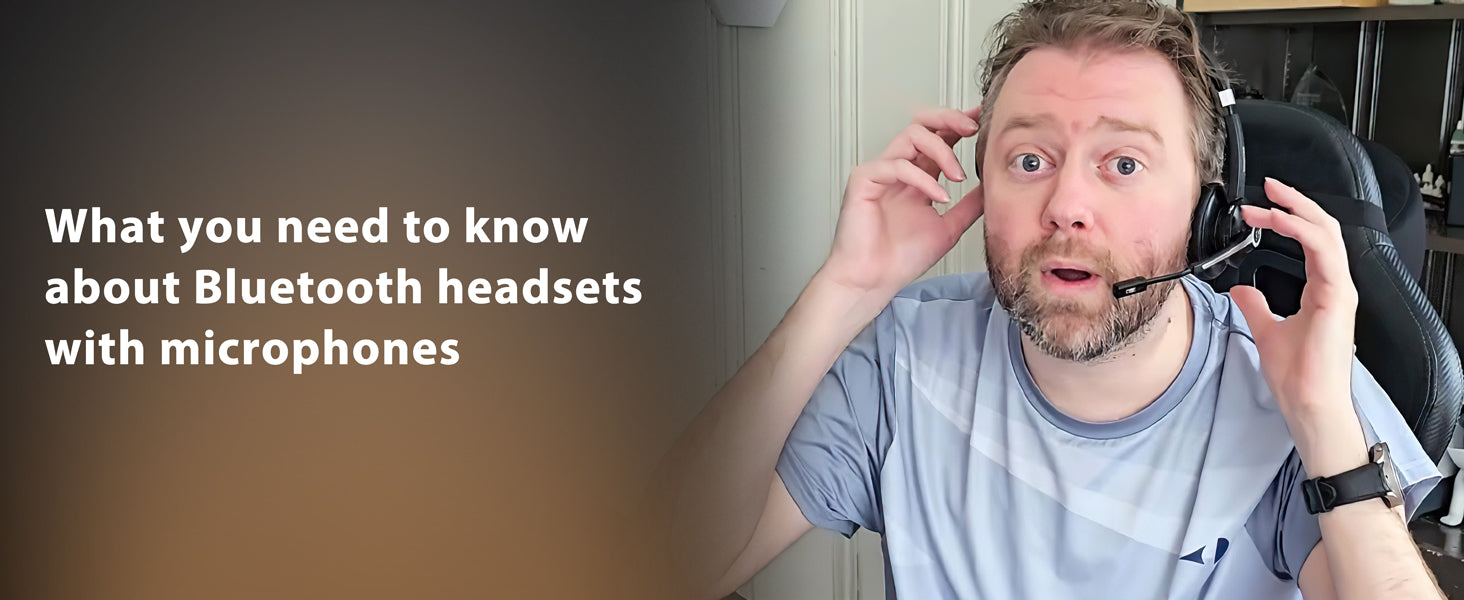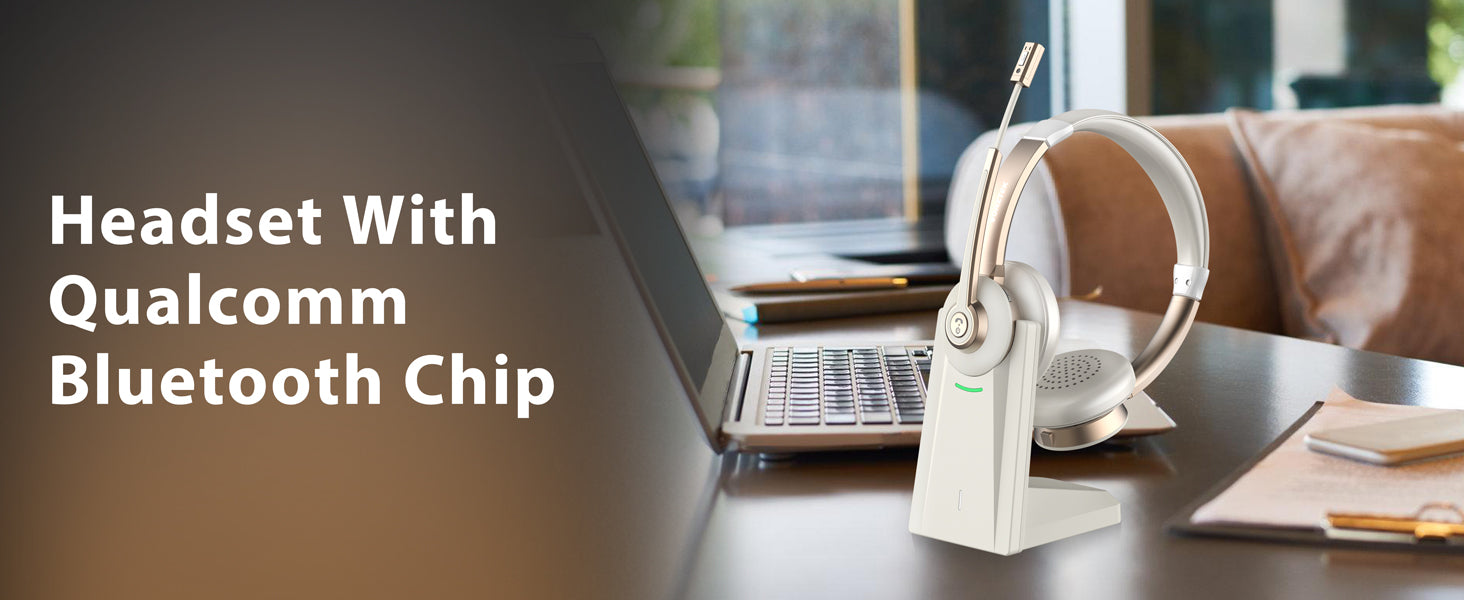What you need to know about Bluetooth headsets with microphones
As phone headsets become more and more popular, more and more people are starting to discuss this. When using it, what people are most concerned about is the noise reduction effect and the stability of the call sound. Then the stability of the call sound is most directly affected by the microphone, which directly determines the quality of the headset call.
From the invention of headphones at the end of the 19th century to now, more and more functions such as wireless headphones and noise-canceling headphones have appeared. Have you noticed that the microphone is also changing along with the headset?
The history of headphones
Invention: The concept of headphones dates back to the late 19th century when the first rudimentary devices were developed for telephone operators and radio operators. These early headphones were bulky and uncomfortable, consisting of simple earpieces connected by a headband.
World War II: During World War II, headphones became more widespread with the development of lightweight and portable models for military use. Pilots, radio operators, and other personnel relied on headphones for communication and listening to transmissions.
Hi-Fi Era: In the post-war era, the popularity of headphones grew with the rise of hi-fi audio systems and stereo recordings. Headphones became an essential accessory for music enthusiasts who sought to enjoy high-quality sound reproduction in private.
The history of microphone
The evolution of microphones in headphones has been integral to the development of communication and audio technology. Here's a brief history:
Early Telegraph and Telephone: The earliest form of microphone technology can be traced back to the 19th century with the invention of the telegraph and telephone. These early devices used carbon microphones, which consisted of a diaphragm connected to a carbon granule that changed resistance when sound waves vibrated the diaphragm. This resistance change was then converted into electrical signals for transmission.
Electrodynamic Microphones: In the early 20th century, electrodynamic microphones, also known as dynamic microphones, were developed. These microphones utilized electromagnetic induction to convert sound waves into electrical signals. They were more robust and durable than carbon microphones, making them suitable for a variety of applications, including headphones.
Condenser Microphones: Condenser microphones, also called capacitor microphones, were introduced in the 1910s. These microphones used a thin diaphragm placed close to a metal plate to capture sound waves. The vibrations of the diaphragm caused changes in the capacitance between the diaphragm and the plate, resulting in electrical signals. Condenser microphones offered higher sensitivity and frequency response compared to dynamic microphones, making them ideal for capturing detailed audio in headphones.
Electret Condenser Microphones: In the 1960s, electret condenser microphones were developed, which incorporated a permanently charged material (electret) to improve sensitivity and reduce noise. These microphones became widely used in headphones due to their compact size, low power requirements, and affordability.
Integration into Headphones: In the latter half of the 20th century and into the 21st century, microphones became standard components in headphones, particularly with the rise of communication devices such as telephones, walkie-talkies, and later, smartphones and computers. Headsets with built-in microphones enabled hands-free communication and became essential tools for professionals and consumers alike.
Noise-Canceling and Directional Microphones: Recent advancements in microphone technology have led to the development of noise-canceling and directional microphones for headphones. These microphones use sophisticated algorithms and acoustic designs to filter out background noise and focus on capturing clear, intelligible speech. Noise-canceling headphones with built-in microphones have become increasingly popular for use in noisy environments and for hands-free calling.
Wireless Connectivity: With the advent of wireless headphones and earbuds, microphones have played a crucial role in enabling voice calls, voice commands, and virtual assistant interactions without the need for physical cables. Bluetooth technology and other wireless protocols allow seamless communication between headphones and connected devices, enhancing the user experience and convenience.
Overall, the evolution of microphones in headphones has mirrored advancements in communication technology, enabling clearer, more immersive audio experiences for users in various contexts.
Destined to care about the quality of the microphone
As you can imagine, among most people currently, almost no one has an independent office space, so people always work in a noisy environment. When you need to make collaborative phone calls at work, a high-quality microphone headset will always allow you to leave a very good impression among your colleagues.
If your office environment meets the following conditions, you'd better choose the headset with noise-canceling function
- Your office is frequented by people coming and going or passing by.
- The distance between you and your colleagues is less than 30 feet.
- You spend most of your time in this position.
- Your job requires you to provide stable, continuous, uninterrupted and clear call quality.
If your job does not meet any of the above criteria, you are free to choose whether or not to use a headset with noise cancellation, but please note that headsets with noise-canceling microphones are generally more expensive than headsets without noise-canceling microphones, so you can make a choice based on your needs.












Leave a comment
All comments are moderated before being published.
This site is protected by hCaptcha and the hCaptcha Privacy Policy and Terms of Service apply.